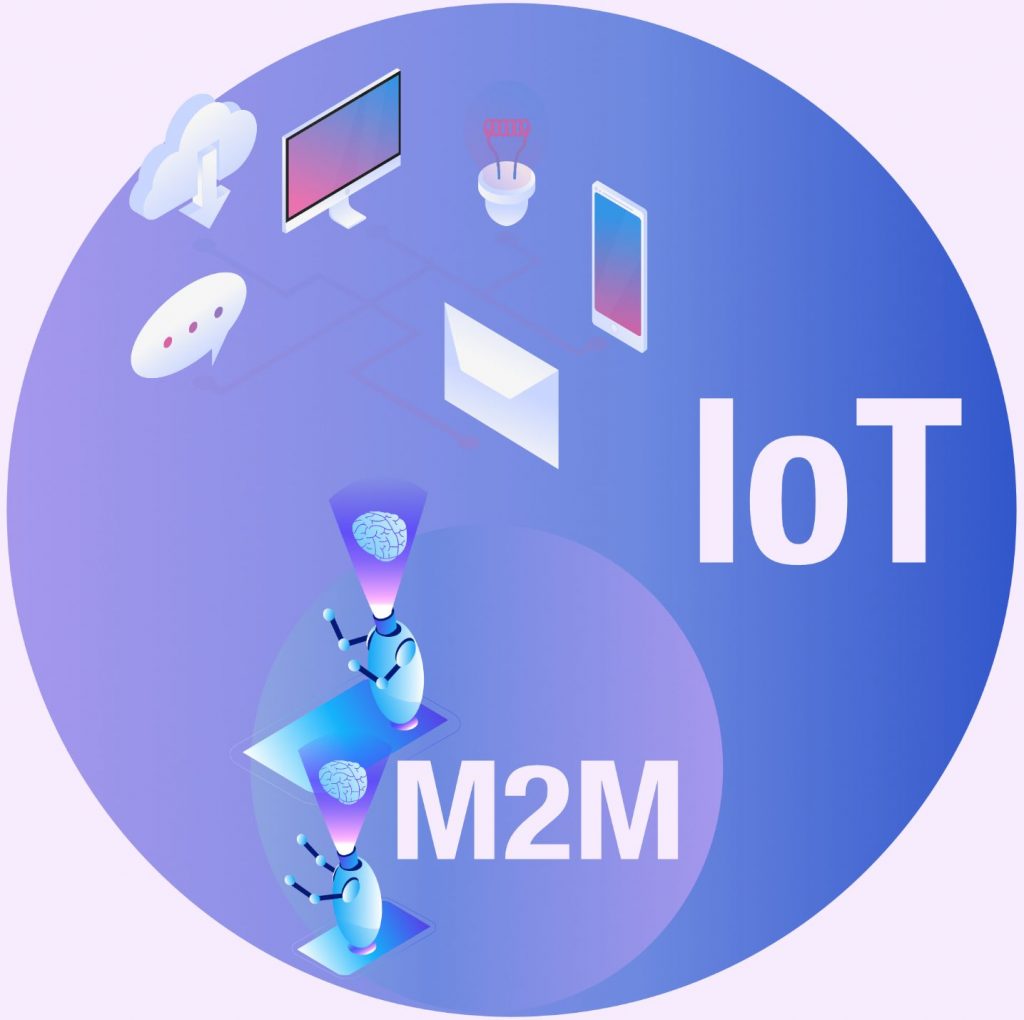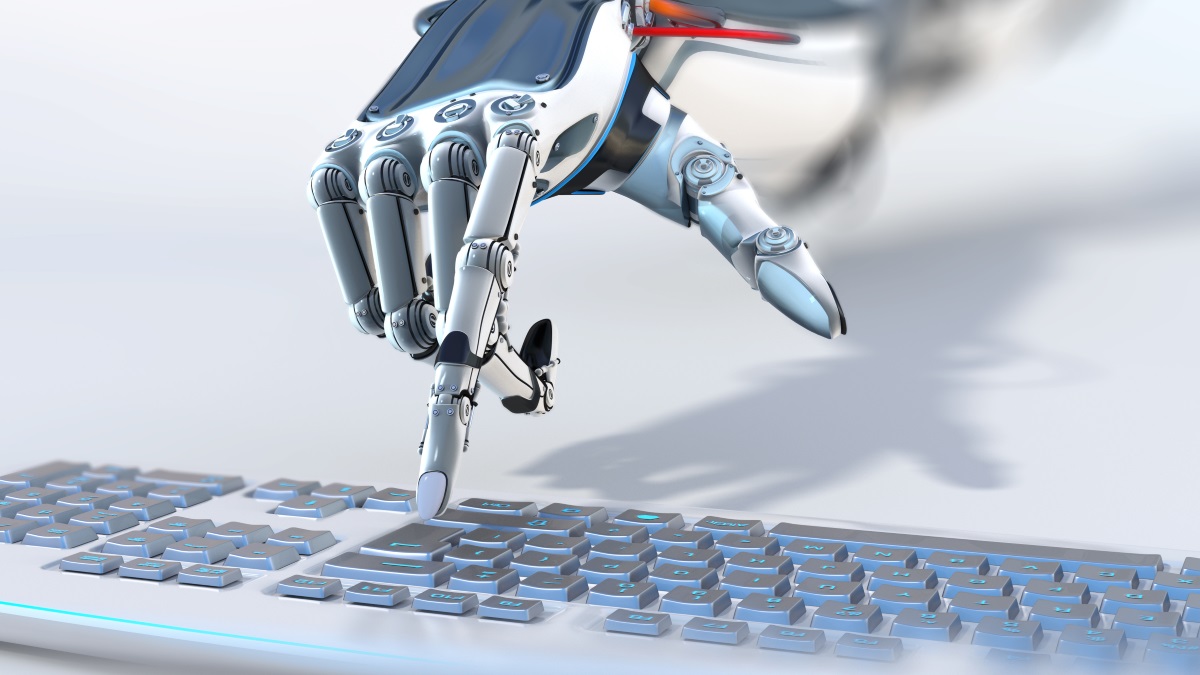We have all probably heard or seen the abbreviation ‘M2M’. We instinctively know it has to do with machines and IT. But what does it really mean and what is it for?
Below is a comprehensive guide into the world of M2M communication and how M2M technology is used today.
What is M2M communication
M2M, which stands for machine-to-machine communication, refers to the technology that connects remote machines using the internet. It is used broadly to describe the technology that enables network devices to autonomously exchange information.
Machines interacting with machines? Sounds scary? Don’t worry, Skynet’s not taking over the world.
How M2M works
Machines in a network make up an M2M network, which is similar to a LAN or WAN network. That is why they are often swept under the blanket term ‘the Internet of Things’, or IoT, despite being exclusively used to allow machines, sensors, and controllers to communicate.
These devices send information they collect back to other devices on the network. Users, or any other intelligent control unit, can assess the network and issue appropriate instructions to network connected devices.
M2M technology relies on software-controlled communication between machines and devices. Special applications translate information into data relevant to the end user.
This data is analyzed and monitored according to device specifications. Certain data can trigger automated actions, while manual actions can be triggered by machines and users from anywhere, due to the remote nature of their communication.
M2M system components
The main components of an M2M system include:
- Sensors (e.g. RFID sensor)
- Wireless network or cellular communications link
- Internet connected computer
- System software for data processing
Engineers place sensors in strategic locations, where they can record and send data in real-time to a wireless network which is connected to the internet. They can use specialized software to monitor the entire process, analyzing the incoming data.
Types of M2M connections
The communication between the machines includes:
- Serial connection,
- Power line connection (PLC)
- Wireless connections in the Industrial Internet of Things (IIoT)
Businesses rely on M2M communication to improve business processes, efficiently monitor company assets, and generate new benefits.
Why we need M2M and where we can use it
Here’s an example: imagine running a business preparing frozen food and delivering it to grocery stores. Traditionally, you would track how quickly trucks get to each store by telephone or, worse yet, by following the driver’s papertrail of sign-offs.
What if instead, you could accomplish all of that and more by simply relying on M2M communication? A simple set of sensors could send alerts as to your fleet’s whereabouts, when a truck is low on fuel, or even when it needs repairs. In addition, it could automatically request a maintenance appointment with your mechanic. Sensors can monitor the temperature in the refrigerated trucks, and if the temperature gets too high, programmed M2M devices could lower it so the food stays frozen.
The above refers to no hypothetical future. This is happening here and now. The question you should be asking is where else can we use M2M communication technology? Apart from delivering frozen food on time. Well, turns out, almost anywhere.
Telemetry
The most popular type of M2M communication that we know is telemetry. The practice has been used since the turn of the new century to transfer operational data from connected devices. At first, telephone lines, and later, radio waves, were used to transfer measurements gathered from monitoring instruments in remote locations.
Telemetry has found widespread use in the insurance industry. Wearable devices with sensors and smart devices are used to relay data to insurance firms, who adopt flexible usage-based premiums. Smart IT has been lucky to contribute to the development of the practice, implementing vehicle telemetry for insurance firm Zaman Broker.
The Internet and improved standards for wireless technology have expanded the role of telemetry from pure science, engineering and manufacturing to everyday use in products like home heating units, electric meters and Internet-connected appliances. Products built with M2M communication capabilities are often called ‘smart’.
The smart home
The Internet of Things and M2M technology are closely associated with the concept of the ‘smart home’. The term refers to the control and automation of lighting, heating (smart thermostats), ventilation and air conditioning, security, as well as home appliances (washers, dryers, ovens, refrigerators and freezers), where remote monitoring and control is implemented with the help of M2M technology.
Manufacturers like LG and Samsung are already developing smart home appliances to help consumers improve quality of life. For instance, washing machines with in-built M2M-capability notify when the washing cycle is complete. Smart refrigerators order depleting groceries from shops.
M2M technology is especially useful for people with young children or elderly relatives as the smart home system notifies users in case of any emergency.
Healthcare IoT
Healthcare is another prominent domain where M2M technology is applied. Healthcare IoT comes in many forms including e-health, m-health, telemedicine and assisted living. Patients with non-life-threatening conditions can be equipped with sensors that monitor blood pressure or blood sugar levels. Additional connected devices can track a person’s movement, detect when they are unwell and alert a healthcare worker about their condition.
They can be sent home and observed remotely by medical staff, who can interpret the data. Hospitals thus benefit from freed up hospital beds and doctors are able to dedicate time to more urgent cases.
Retail M2M
Retail is a great field for M2M technology development, where it is used for in-store product placement and replacement, kiosks and digital signage, vending machine management, parking meters and wireless payment systems.
Manufacturing
There are many reasons why smart manufacturing is a good idea. Digital control systems, asset management and smart sensors can maximize operational efficiency, safety and reliability, while integration with smart building systems and smart grids can optimize energy consumption and reduce the carbon footprint.
M2M tools allow business owners to be alerted on their smartphones when an important piece of equipment needs servicing, so they can address issues as quickly as they arise. Sophisticated networks of sensors connected to the Internet even order replacement parts automatically.
The manufacturing industry therefore relies on technology to ensure that costs are managed properly and processes are executed efficiently. And, of course, the smarter the manufacturing process, the quicker it can respond to changing customer demand.
M2M-enabled automation
In the new age of energy efficiency, automation will also quickly become normal. As energy companies look for new ways to automate metering processes, M2M will come in handy. It will help automatically gather energy consumption data for accurate customer billing. Smart meters will track how much energy a business uses and automatically alert the energy company.
M2M vs IoT
So now that we know IoT and M2M technologies are used to exchange data between objects and systems, let’s try to define the differences between IoT and M2M.
If you picture the two technologies as a Euler diagram, you will see that the IoT subset will be broader than M2M.

Turns out, the Internet of Things is a larger concept that closely connected to software applications. Whereas M2M refers to the actual ecosystem of connected devices.
M2M is about plugging in a device to the cloud, managing it, and harnessing the data.
M2M communication usually employs two endpoints (devices) using hardware to enable access to different types of networks. They use the same IP network protocols that are usually used to exchange data traffic on the web.
Machine-to-machine refers to sensors and devices that can collect and exchange information.
When it comes to the Internet of Things, IoT refers to a network of connections that extend beyond devices to other applications and people. It also encompasses systems that further mine and process data collected in the process of M2M communication.
In brief, M2M is the term that reflects information exchange between devices, while IoT is the network of such connections, solution components and other systems.
Differing specifications
In the world of consumer goods, IoT services are offered through both a centralized and distributed architecture. From a technical point of view, M2M is limited to a centralized structure alone. Therefore, the network tier of the Internet of Things is hierarchical, whereas M2M’s is flat.
When it comes to data collection and exchange, in machine-to-machine communication data goes to the data center. In contrast, with IoT we observe traffic distribution with some of the data going to the data center and the remainder kept at the network edge.
Terminology
Last but not least, when it comes to M2M, you might hear the words—machines, maintenance, point-to-point, hardware based M2M connections. This should give you a clue that you are talking about the smart device ecosystem, a narrow part of the Internet of Things.
While, to refer to IoT, the world will use words such as sensors, integrated systems, internet protocols, cloud networks, along with Big Data and IoT software.
The final word
As you can see machine-to-machine technology has a multitude of use cases: from helping to get frozen peas to your Thanksgiving dinner on time, to keeping our health in check. Machine-to-machine communication technology is slowly but surely seeping into everyday life.
Properly used machine-to-machine communication can help us reimagine large parts of the world for better security and even environmental protection. The takeaway is that it opens up a slew of new opportunities for businesses and individuals, who care to explore its many applications and benefits.
25 April 2017

 Alexander Kulitski
,
Alexander Kulitski
, 



